Wildfires and What You Can Do About Them
Overview
What to Expect

Wildfire is a natural part of the ecosystem in the Treasure Valley. Each summer you can expect smoke from nearby fires to affect air quality in the region. (Source) Nearby fires may also impact travel around the Treasure Valley, and to popular destinations like the Sawtooth Mountains.
Most people are not aware that wind-blown embers are the main cause of homes igniting during a wildfire. Dry, flammable debris like leaves in your gutters or branches on your roof can ignite long before the actual fire gets close. With some simple maintenance and regular clean-up around your home, these risks can be drastically reduced.
Worst-Case Scenario
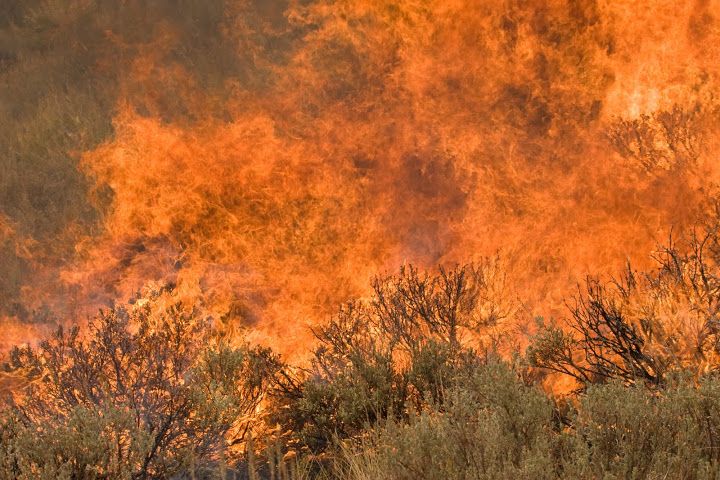
The foothills surrounding the Treasure Valley could catch fire and threaten people and property. In 2016, the Table Rock Fire burned nearly 2,500 acres and destroyed one home. It was started by an aerial firework. Read more about the fire here.
In 2008, the Oregon Trail Fire destroyed 20 homes and led to the death of Boise State University professor Mary Ellen Ryder.
There is a heightened risk of floods and landslides after wildfire. Wildfire can cause significant vegetation loss and expose highly-erosive soil, creating the conditions for a landslide. Such landslides are also called post-fire debris flows. Several of these debris flows struck Boise in 1959. You can watch When the Pot Boiled Over to learn more. You can also hear local geomorphologist and BSU Professor Dr. Jen Pierce discuss these events and the risk of future debris flows in this conversation with Idaho Matters.
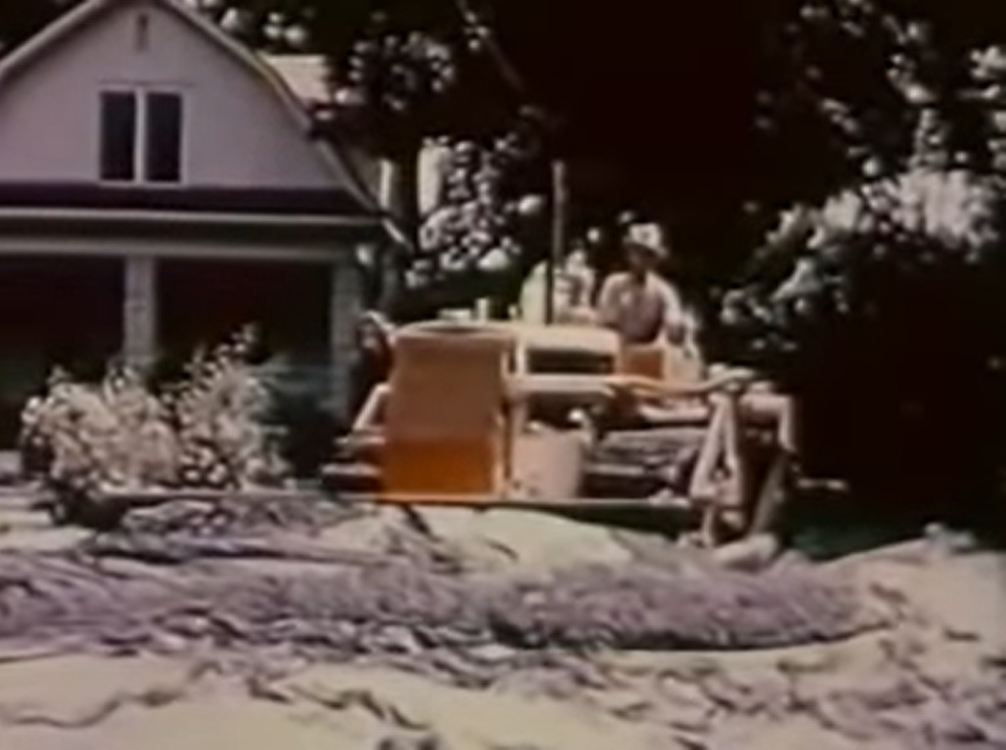
How to Prepare
Historically, humans have caused more than 80% of wildfires in the Treasure Valley. People who live, work, or recreate in the foothills should be aware of the wildfire risk in the region and take precautions to exclude ignition sources that put homes and the environment at risk.
There are many simple steps homeowners can take to reduce their risks, making their family, property and community safer from the real threat of wildfire.
If the worst should happen and a wildfire starts in the Boise Foothills, the most immediate danger to you will be windborne embers spreading the flames to your home. You can minimize this risk by keeping your yard and gutters clean and clear of foliage and debris.
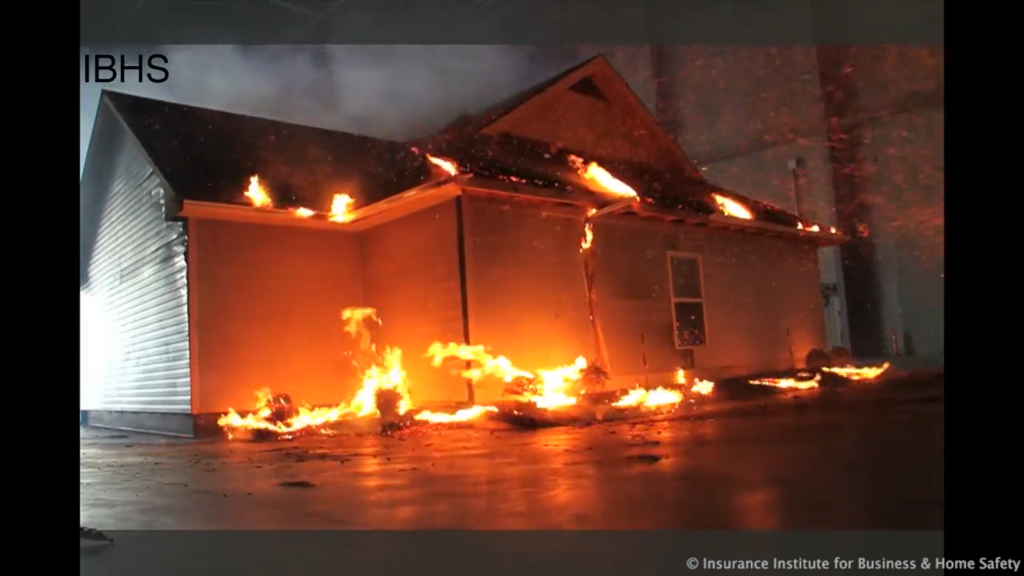
Even one day of clean-up can make a world of difference. Look at this backyard before and after checking for fire-hazards.
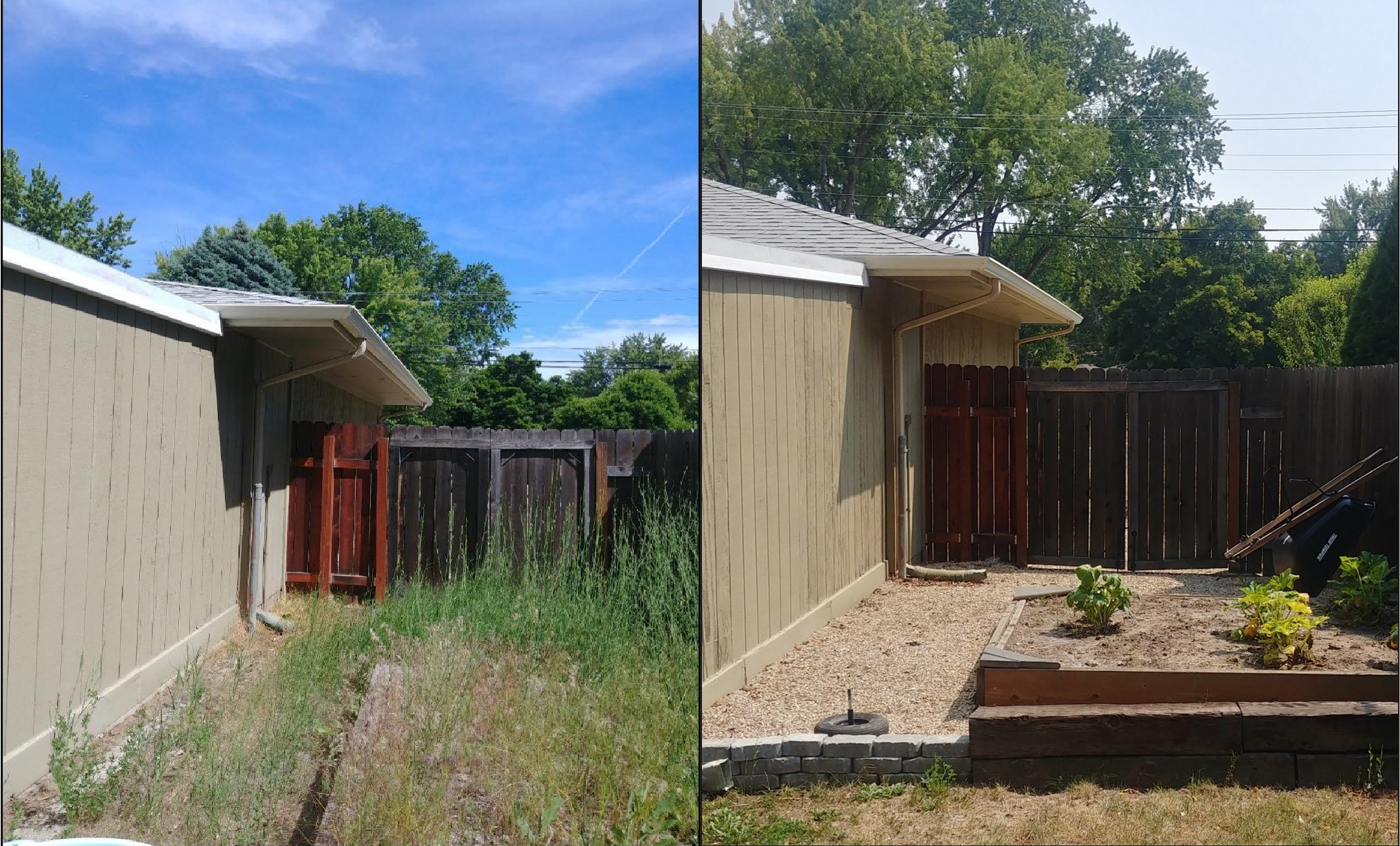
Before, airborne sparks could ignite dry grass and spread to the house; now, those sparks would burn out in the gravel. Consider how you can protect your home in the same way.
The following Home Ignition Checklist can be used to identify steps you can take that are specific to your own home.
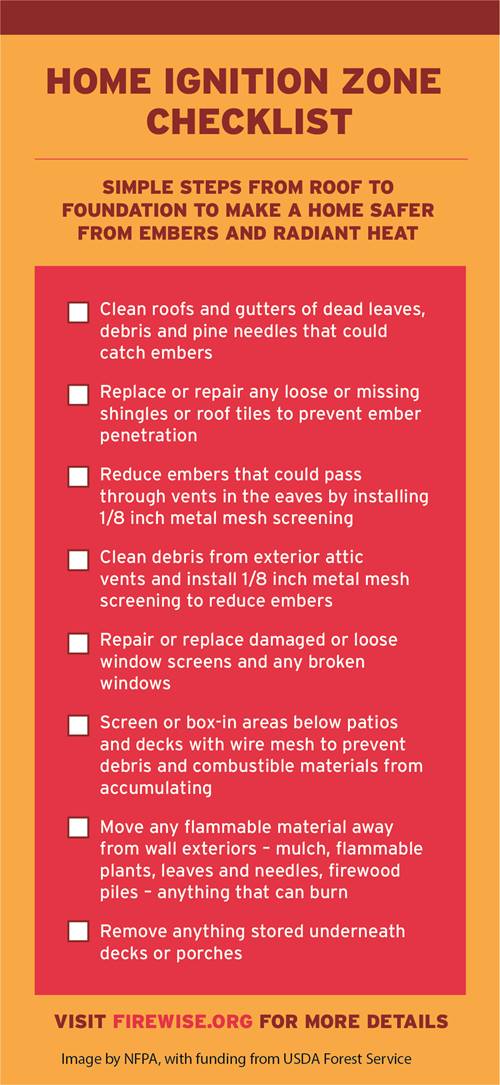
Now we can consider some local resources that can help you better protect your home and loved ones.
Actions You Can Take to Reduce Your Risk:
- Get a FREE wildfire risk assessment from your local fire officials
- Learn if your home is in a wildfire zone — Choose ‘explore’, and type in Boise, Idaho
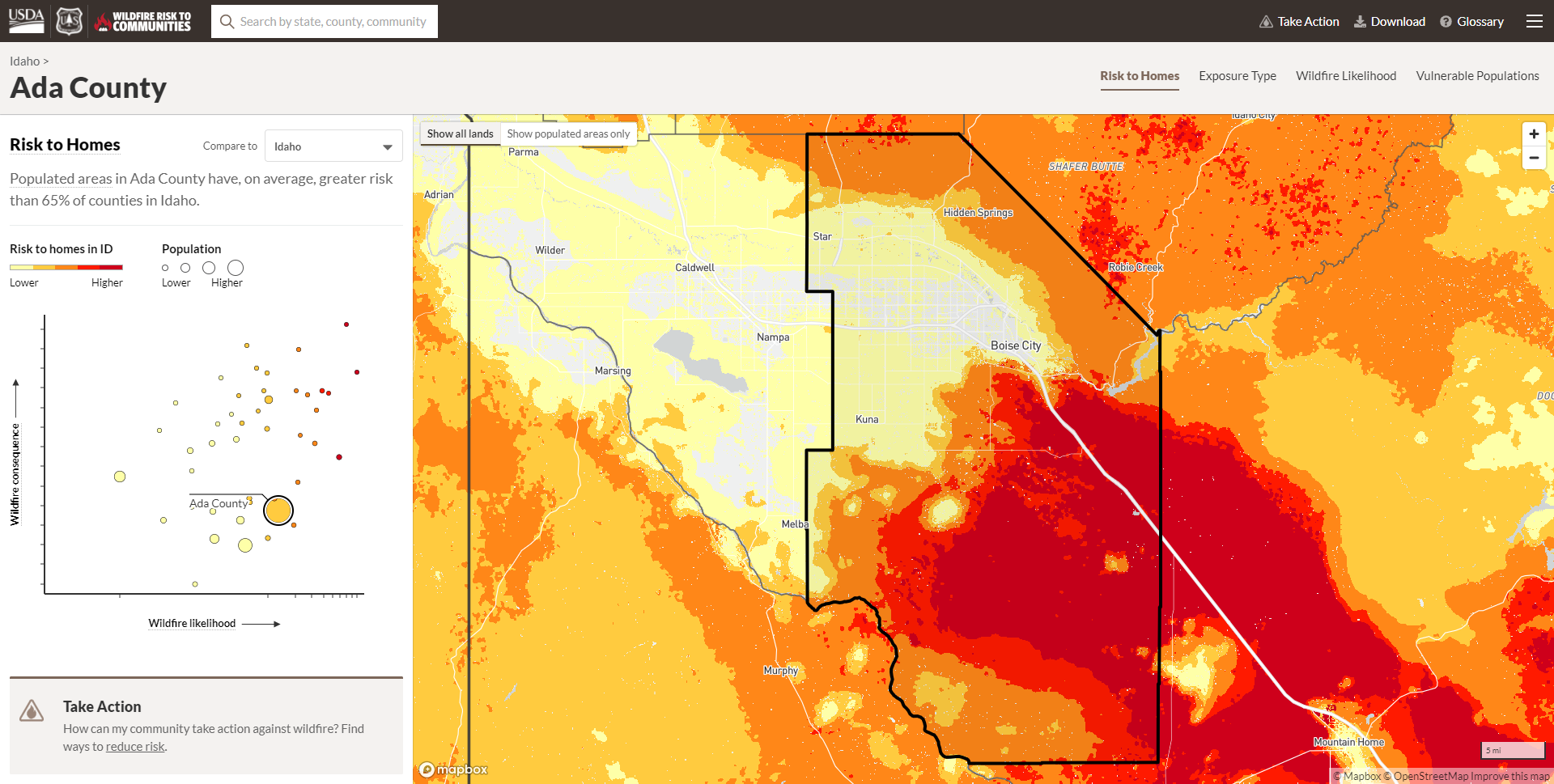
- Move wood piles at least 30 feet from homes and clear gutters of leaves and debris
- Plant fire-resistant plants around your home
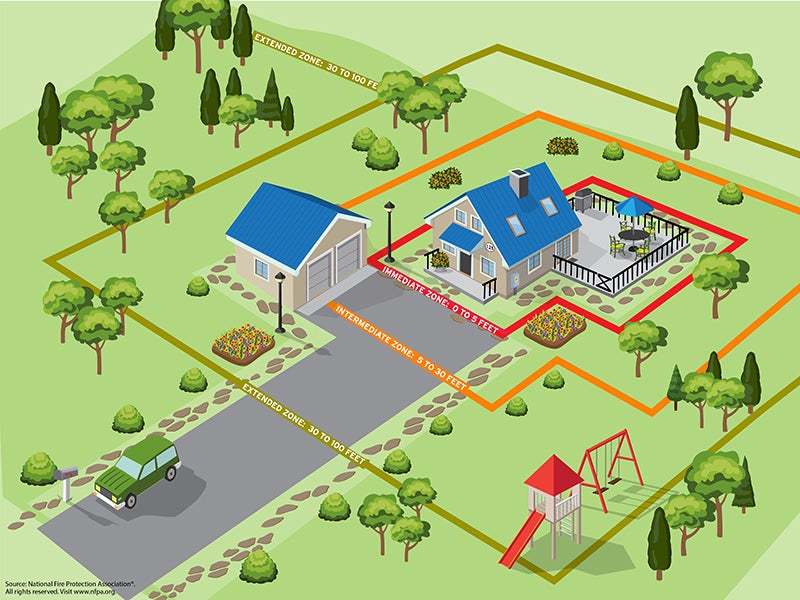
- Additional Materials and Preparedness Guides
- If a wildfire does impact your home or neighborhood, there may be toxic chemicals in the home that can cause additional health impacts. See asbestos and natural disasters guide below.
Local Resources
How is this hazard impacted by a changing climate?
Wildfire seasons are getting longer and more intense. With the possibility of more fires in and around the Treasure Valley, smoke could be in the air longer and homes along wildfire-prone areas will be at higher risk. Air quality and opportunities for recreation or tourism will be affected. Longer fire seasons also mean post-fire debris flows could occur more frequently. (Source: NOAA – ID Climate Summary)
Written by Carson MacPherson-Krutsky and Caleb Tidwell. Edited by Captain Jerry McAdams from Boise Fire Department